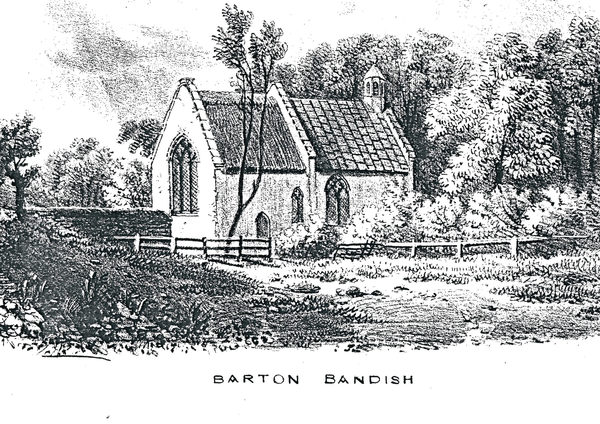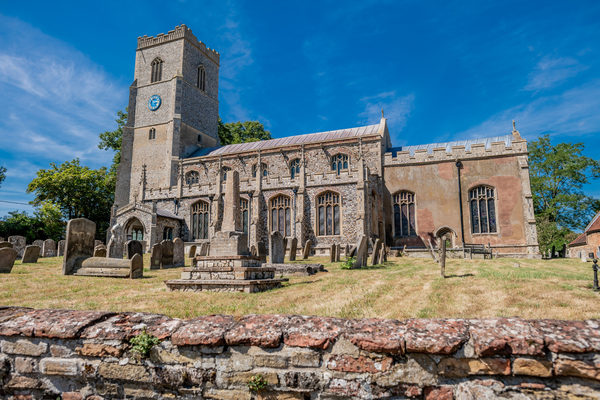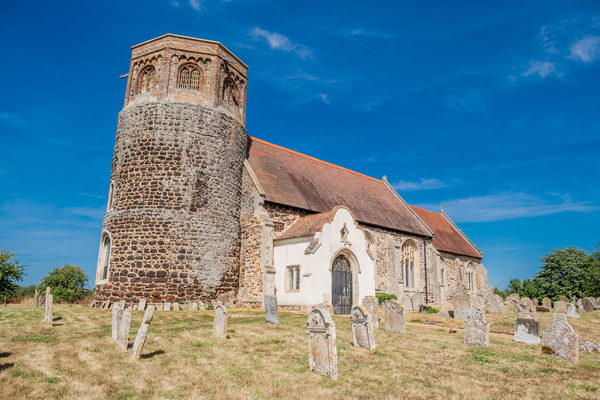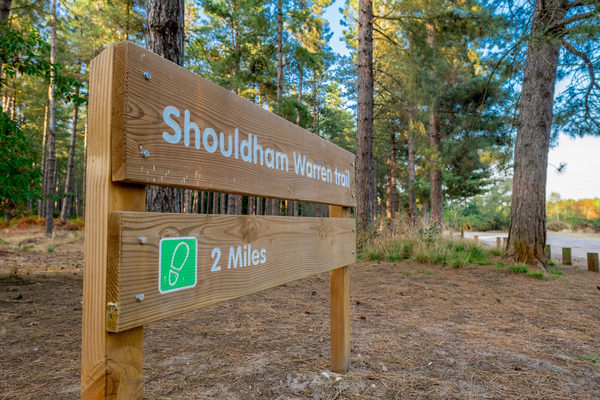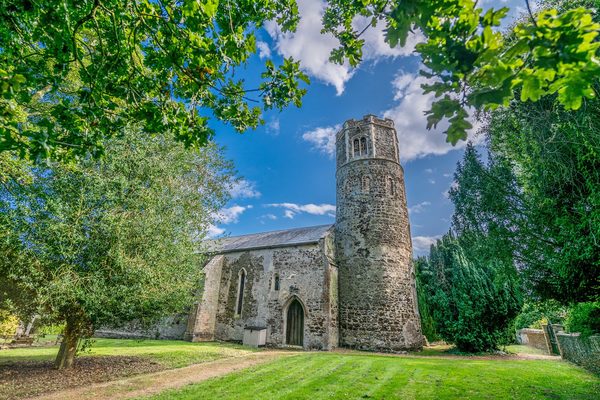The name Barton Bendish means 'Barton (outlying settlement) inside the ditch' referring to the 'Devil's Ditch', which seems to have formed part of a defensive work controlling movements along the Roman road running past Fincham, the east-west route across Norfolk from the Fens to the port at Caister-by -Yarmouth. The ditch itself dates from the post-Roman period. In the Middle Ages there were three churches near one another in Barton Bendish. This curious phenomenon that occurs elsewhere in the county for example at Beechamwell, Fincham, Marham, Oxborough and West Dereham is usually a sign of dense early settlement and sub-division within what would now be classed as a parish. At Barton Bendish, having been ruinous for many years, All Saints Church was demolished in 1788. St Mary's was declared redundant in 1974 and was vested in the Redundant Churches Fund in 1976. St Andrew's remains a parish church.
St Mary's Church is relatively isolated position and recently thatched roof, now a rarity in this part of Norfolk, but probably the original mediaeval covering, lend it considerable charm. The present building is mainly in the early 14th century style but it possesses a more complicated history than its present unsophisticated appearance might indicate. Until 1710 it had a tower at the west end of the nave. The same year the tower fell in a storm, demolishing the western part of the nave, which was never rebuilt to its full length. The faculty of 1788 to demolish All Saints Church estimated that the sale of bells and lead would yield E56 15s 6d towards the cost of repairing St Mary's; the actual cost was some £80, the deficit being made good by the Rector, Joseph Forby, who described in the register book the work carried out on St Mary's in the summer of 1789. In summary, a cupola was erected at the west end for the bell, the roof was mended and the windows reglazed. The church was repaired, repewed, and whitewashed, new ceilings were put in and a new reading desk and pews were erected. The former south entrance was 'turned to the use of a vestry' and 'An entrance was made at the west end where a beautiful Norman arch was erected, formerly by the north entry of All Saints' Church'. A gravestone was found inverted at the west end and moved to the chancel, where it remains today.
St Mary's received at least one more restoration, in 1865, which is not detailed in the Diocesan Faculty Books but, once again, in a note in the pages of the Parish Registers in the hand of Stephen Gooch Read, the Rector. The high pews were removed from the chancel, the pulpit and reading desk reduced, and a new communion rail was made. The box pews in the nave were reduced in height and provision was made for all worshippers to face east; seating was provided for the school children in the chancel instead of within the communion rail, as hitherto. Finally, several rows of hat pegs were to be taken down.
The late Norman doorway at the west end, from the demolished church of All Saints, has some unusual features. The outside of the arch has a late 12th century 'dogtooth' motif; inside this is a 'beakhead' design, a very rare example of the use of this motif in Norfolk, and the innermost carving is a 'bobbin' or double-cone design, which is also repeated on the inner shafts. The carving on the outer shafts perhaps resembles leaves. Sir Nikolaus Pevsner includes this doorway as one of the half dozen best examples of Norman doorways in England. The door is old and keeps its ancient closing ring.
The windows on the north, south and east sides of the church have early 14th century tracery in the Decorated style, some with nicely carved heads on the drip moulds.
The north vestry is probably Victorian with a curious north 'window' painted on the wall and recently reinstated. The net-like 'reticulated' tracery of the east window is characteristic of the period, c 1330, while the tracery of some of the others resembles certain windows in St Andrew's, the same architect possibly having worked on both.
The priest's door on the south side of the chancel preserved independent access to the church for the incumbent. It has a lovely crocketted ogee arch and animal faces carved on the ends al the moulding.
A recent excavation round the church found a burial just outside the priest's doorway, along with a pewter paten, possibly the burial of Walter Baldwin, Rector 1349-87, who in his Will asked to be buried in the churchyard. The excavations also revealed that there was a small turret for the rood stairs on the south side of the church as well as the foundations of what may have been a south porch. Examples of both Roman and Saxo-Norman pottery, the latter of the so-called Thetford and St Neot's types, were also found, suggesting a long continuity of occupation of the site.
The present bell cote at the west end, erected in 1871 in memory of Sir Hanson and Lady Berney, houses one bell of 1691. The materials used in the construction of St Mary's were mainly flint and rubble, covered with lime rendering which has been renewed on the east wall.
The font has a hexagonal bowl with carving in the 14th century style; it was given by Lady Berney in 1857. The seating is mainly provided by low box pews, those cut down in 1865, except for the four plain benches at the back, one of which has the date 1637 cut into it. The floor seems to be composed of the tiles put down in the 1789 restoration.
The wall painting on the south wall, probably 14th century, is somewhat faded. It has generally been described as the martyrdom of St Katharine, but it is uncertain.
The altar table has simple carving and the inscription E L 1633', a relatively rare example of a dated Carolean altar table. The east wall has a mediaeval aumbry, or cupboard, for storage of the Communion plate or possibly the Reservation of the Holy Oils or the Blessed Sacrament. The sedilia in the south wall have an unusual band below with a decorative motif of flowers in quatrefoils.
The church has a number of interesting memorials on Sanctuary floor, South wall and North wall. The style of these memorials indicates the fashions of passing years.
